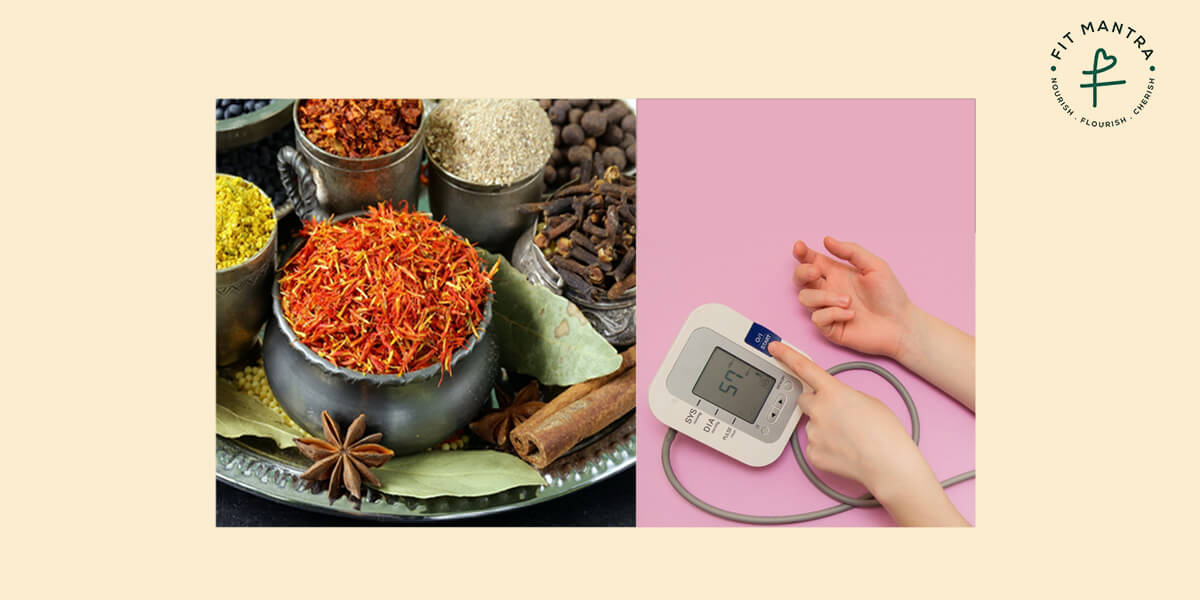Elevated blood pressure is a hidden condition that can gradually develop without apparent signs. Nevertheless, if not addressed, its consequences on overall well-being can be considerable. Fortunately, controlling high blood pressure doesn’t necessarily require intricate treatments or drugs. At times, the answers are located directly in your pantry of spices.
India’s varied cooking customs not only provide taste but also a plethora of natural healing methods. For centuries, Indian herbs and spices have been utilized not just for their flavor, but also for their healing qualities, such as aiding in maintaining optimal blood pressure levels.
Herbs and Spices from India that Aid in Reducing Hypertension
1. Turmeric, also known as Haldi, is a valuable source of numerous health advantages. Curcumin, the active compound, possesses properties that can reduce blood pressure due to its anti-inflammatory effects. Including turmeric in your curries, dal, or warm milk is an easy way to incorporate this spice into your diet for high blood pressure.
2. Cinnamon (Dalchini): A spice that is both sweet and warming, cinnamon has been proven to lower blood pressure in people with diabetes and heart issues. Adding cinnamon to your diet, whether sprinkled on oatmeal or stirred into tea, can have a significant impact.
3. Cardamom (Elaichi): A necessary ingredient in Indian desserts and tea, this aromatic spice is commonly used. Research has indicated that cardamom can greatly lower blood pressure, making it more than just a tasty seasoning but also a beneficial choice for heart health when added to your meals. Experiment by incorporating ground cardamom in your tea, curries, or desserts.
4. Garlic (Lahsun): Garlic is known for its positive effects on the heart, such as its capacity to reduce blood pressure by easing blood vessels. Whether consumed fresh, included in chutneys, or used abundantly in recipes, garlic is essential for a diet that promotes healthy blood pressure.
5. Basil (Tulsi): Regarded as the “queen of herbs, “Tulsi is highly respected in India for its healing characteristics. Tulsi is beneficial for lowering stress, a key factor in high blood pressure, and enhancing overall heart health. You have the option to make tulsi tea or incorporate fresh leaves into your recipes.
6. Fenugreek (Methi): Fenugreek seeds and leaves are a popular ingredient in Indian cooking. Fenugreek aids in controlling blood pressure by enhancing heart function and lowering cholesterol levels. Methi seeds can be soaked overnight and eaten in the morning, or the leaves can be incorporated into different recipes.
7. Ginger (Adrak): Also known as Adrak, ginger is a versatile ingredient commonly used in both sweet and savory dishes. Improving circulation and relaxing blood vessels aids in reducing blood pressure. Fresh ginger can be included in teas, soups, and stir-fries to add a spicy flavor while also promoting heart health.
8. Coriander (Dhaniya): In Indian cuisine, both coriander seeds and leaves are commonly used. Coriander possesses diuretic qualities that assist the body in getting rid of surplus sodium, resulting in reduced blood pressure. Ground coriander is a great addition to curries, while fresh leaves can be used for garnishing.





